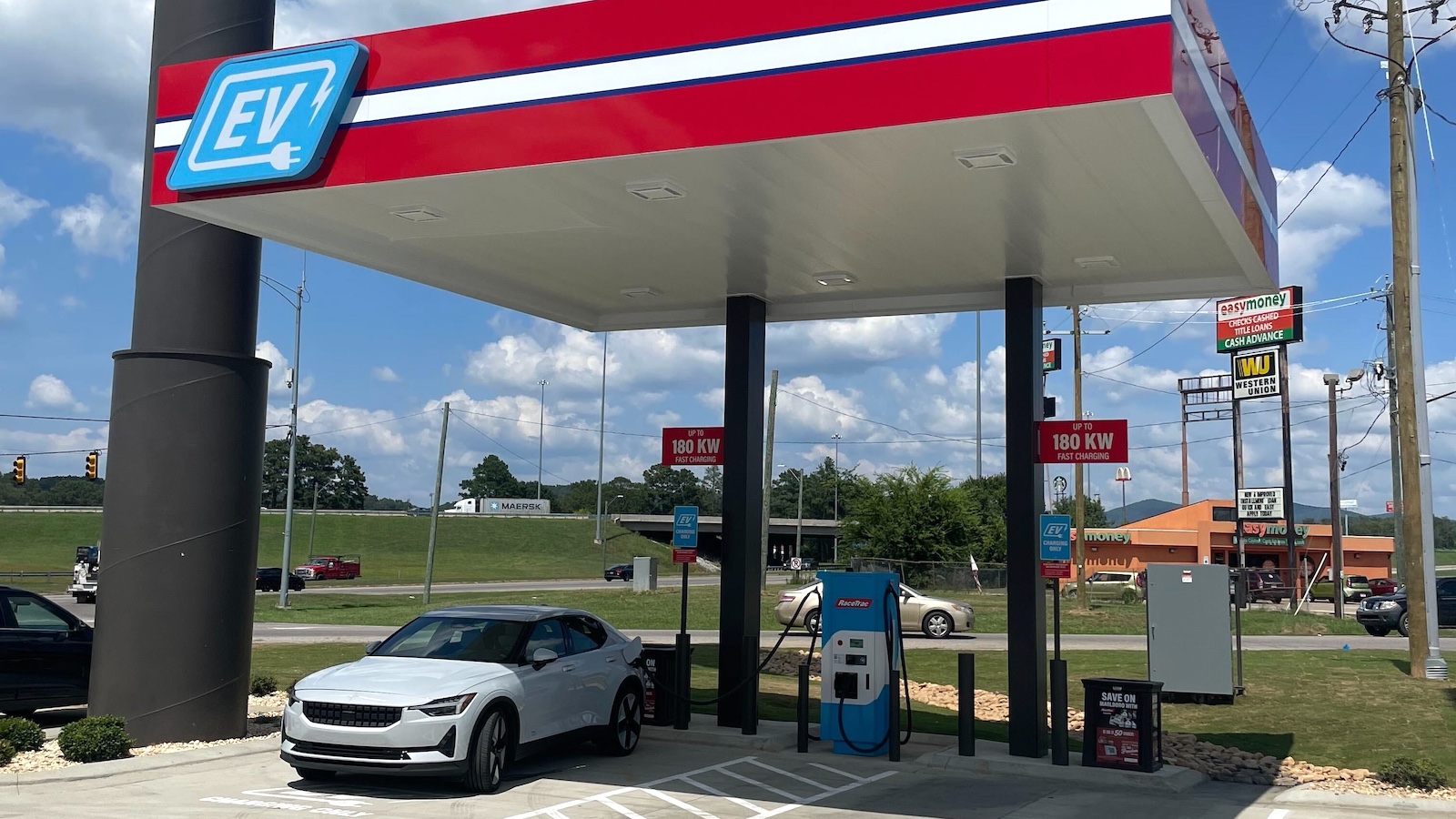When the Racetrac chain of convenience stores was deciding whether to install electric vehicle chargers, project lead Rushi Patel started with a blank Excel sheet and a lot of questions. Did the financials make sense? Where is the best to install them? What features should they have? The answers to questions like these could go a long way toward establishing an economic argument for building out America’s public EV charging infrastructure.
“We found our guests using new types of fuels, like electrons, and we wanted to be with them as part of that journey,” said Patel, the diversified energy manager at Racetrac’s parent company Metroplex Energy. But he was clear that “it’s important to have an offer that does make money.”
Patel slowly started to populate his spreadsheet in 2021, filling cells with EV adoption rates, utility prices, construction costs and a range of other metrics. He also took the company’s executives on a two-hour tour of charging spots in Atlanta, where Racetrac is based. One was tucked behind a shopping plaza, the other was deep within the bowels of a mall garage. It was clear to them that Racetrac could do better.
Two years later, Racetrac installed its first Level 3 fast charger in Oxford, Alabama — complete with the company’s logo and a canopy to shade people from the sun as they pump electrons. It has since opened seven more in three states. So far, he said, “[the business model] is holding up pretty well.”
Those eight chargers are among the 61,000 that blanket the country, a figure that has more than doubled since 2022. The increase comes as mounting evidence shows EV charging stations can be a boon to businesses, and not only by selling electricity.
A recent study in the journal Nature Communications looked at chargers in California and found that, pre-pandemic, businesses saw an average annual boost of $1,500 when at least one of the devices stood nearby. Another paper examined Tesla Supercharger installations nationally and saw they brought a 4 percent increase in visitors to a business. The effect was particularly pronounced if the chargers were within 500 feet, and if it was the first one in the area. This boon is due to the fact that it can take 30 minutes or more to fully charge an EV, giving drivers plenty of time to shop.
“The places that tend to get the biggest bump, is the place that aligns with how long it takes you to charge your car,” said Gordon Burtch, an author of the paper and a professor of information systems at Boston University’s Questrom School of Business. “Sit-down restaurants aren’t benefiting as much as fast-food restaurants.”
Photo courtesy Rushi Patel / Racetrac
A range of companies have seen the upside of installing chargers. Walmart is building its own network of chargers to add to the more than 1,300 chargers already at its stores. Kohl’s and Starbucks are adding more hardware. Subway plans to add “charging oasis parks,” complete with picnic tables, Wi-Fi, and playgrounds. Some places are even offering free charging to entice potential customers.
“Owning and operating a charger on its own can be really tough,” said Jim Burness, the founder of National Car Charging, which manages more than 11,000 charging points across the country. “If you add in the increased shopping basket, the economic case becomes pretty easy.”
Patel says Racetrac is indeed seeing a bump in sales while people stop to plug in. The quality of the experience seems to make a big difference, he added, which is why the company has invested in features like canopies.
“If you’re going to fill your regular vehicle up under a canopy, there should be no reason you can’t do the same [with an EV],” he said, noting that a well-lit facility that includes access to clean restrooms also goes a long way toward drawing patrons.
“If you dial in the offering and make the experience great, not only will they pay a premium, but they’ll come back,” said Karl Doenges, executive director of charging analytics at The Transportation Energy Institute. But both he and Patel noted that there are still challenges to overcome; most notably how to coordinate utility costs with customer pricing.
Utilities often charge commercial accounts two fees: one for the amount of energy consumed and one fixed amount based on the peak demand for the month. Rates can also vary depending on the time of day. This can make determining how to price a charger difficult.
Doenges says operators have been experimenting with time of use pricing, and increasingly, dynamic pricing based on demand, similar to Uber surcharges. According to Patel, some utilities are also developing models that better suit EV charging patterns, which is why Racetrac chose Alabama for its first charger. But, he said, “the hardest part even today has been the way electricity is priced.”
Chargers can also be very expensive to install, ranging from thousands of dollars for a Level 2 charger to hundreds of thousands for a much faster Level 3 device that can do the job in as little as 20 minutes. On that front, at least, there are significant federal incentives available to help. The 2021 bipartisan infrastructure law established the $5 billion National Electric Vehicle Infrastructure program, which is currently rolling out across the country with a goal of creating 500,000 new stations by 2030. Racetrac received $619,575.87 to install four chargers at its store in Dublin, Georgia.
While Patel wouldn’t elaborate on Racetrac’s expansion plans, he said more chargers are coming, and he’s confident that if the company builds them, enough customers will come to make it worth the expense. “We’ve done a ton of analysis,” he said. “We’ve gone deep.”
This story was originally published by Grist with the headline Public EV chargers are good for the planet. They’re also good for business. on Oct 22, 2024.
Research shows that businesses with charging stations nearby see an economic boost. Business, Economics, Transportation Grist




